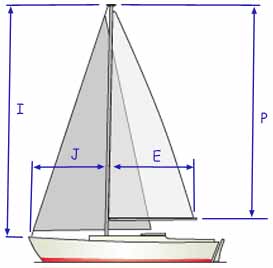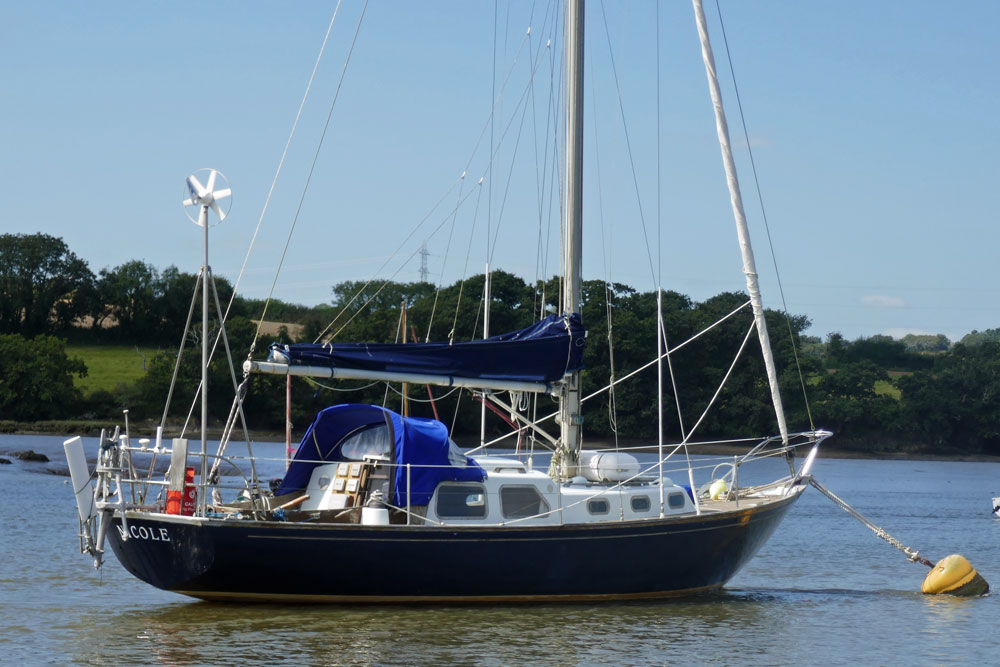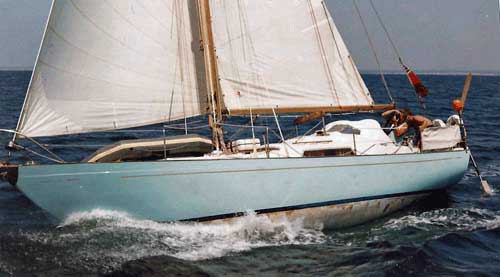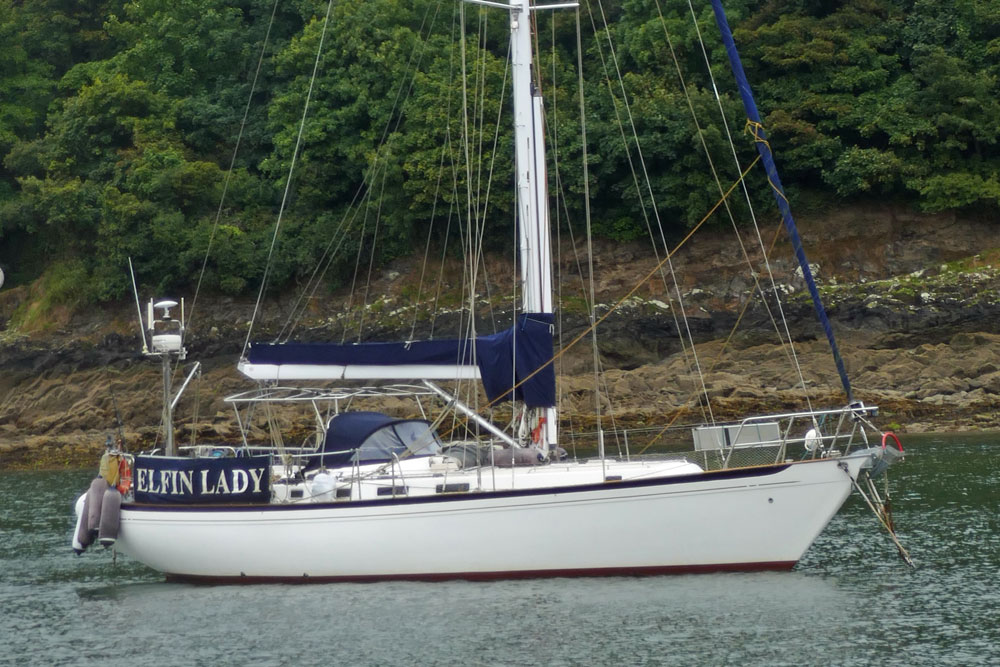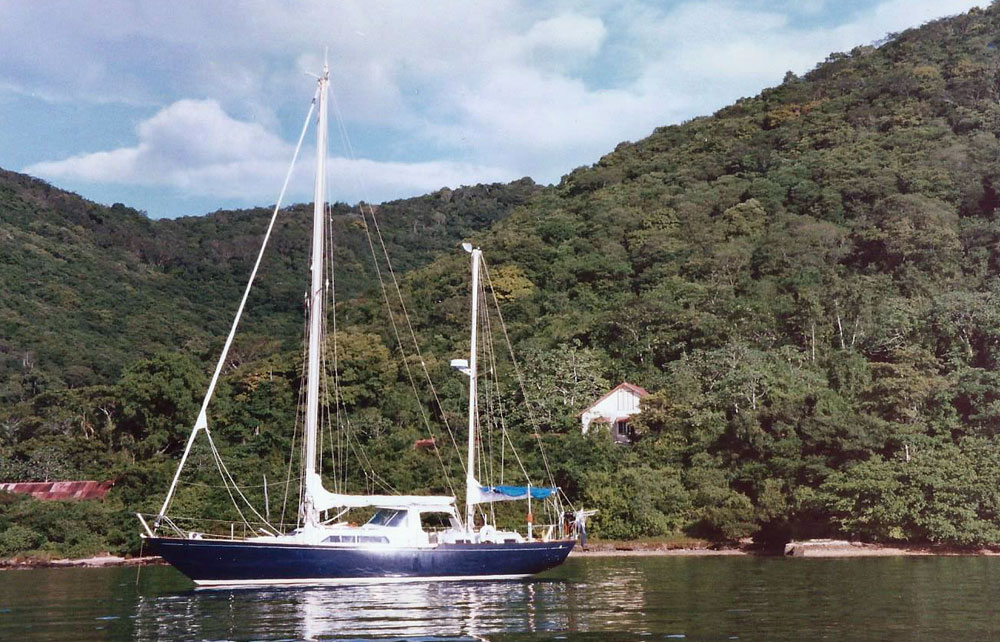- Home
- Cruising Yachts 35' to 40'
- Nicholson 35 Sailboat Specs
The Nicholson 35
Specs & Key Performance Indicators
The Nicholson 35 sailboat, designed by British naval architect Ray Wall, was built by Camper & Nicholson at their shipyard in Gosport, England.
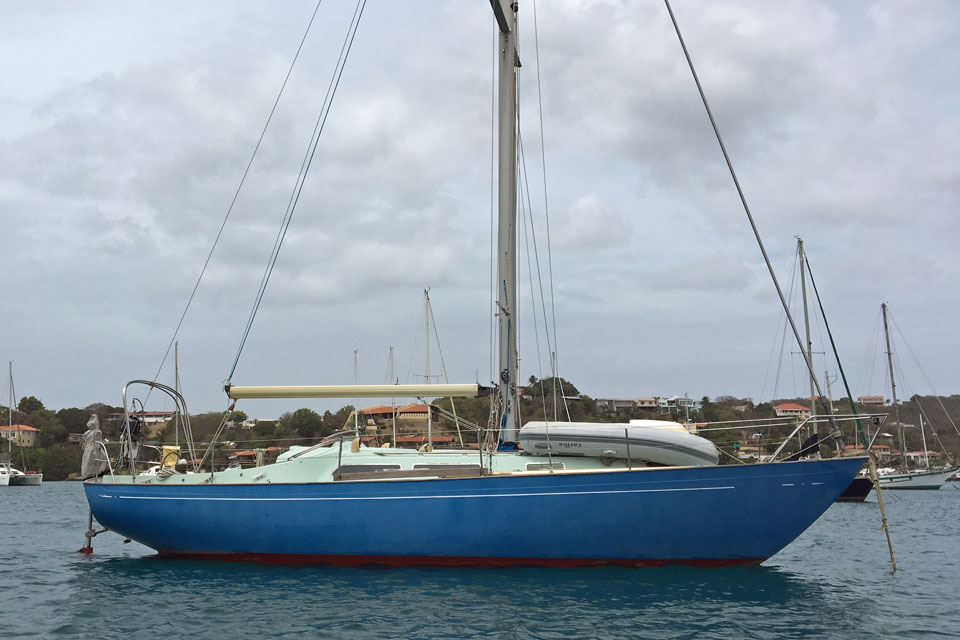 The Nicholson 35 - an ultra-heavy displacement cruiser
The Nicholson 35 - an ultra-heavy displacement cruiserPublished Specification for the Nicholson 35
Keel & Rudder Configuration: Fin keel with skeg-hung rudder
Hull Material: Fiberglass
Length Overall: 10.74m (35'3")
Waterline Length: 8.2m (26'9")
Beam: 3.2m (10'5")
Draft: 1.68m (5'6")
Rig Type: Masthead Sloop
Displacement: 7,099 kg (15,650 lbs)
Ballast: 3,329 kg (7,339 lbs)
Water Tank Capacity: 275 litres (60 gallons)
Fuel Tank Capacity: 160 litres (35 gallons)
Hull Speed: 6.93 knots
Designer: Ray Wall/Camper & Nicholson
Builder: Camper & Nicholson
Year First Built: 1971
Year Last Built: 1985
Number Built: 200
Options & Alternatives
Several later versions of the Nicholson 35 sailboat were produced, identified as Mk I to Mk VII. Here are the essential differences between the original and each of the later versions:
- Mk I to Mk III: These early versions featured a hydraulic drive system with the propeller mounted at the aft end of the keel;
- Mk IV to Mk VII: Later versions transitioned to a more conventional sternshaft and P-bracket for the propeller;
- Rigging: The last boats built had a taller rig, likely introduced for the American market;
- Interior Layout: There were minor changes in the internal layout, such as the addition of a quarter berth aft of the chart table in later models.
Sail Areas & Rig Dimensions
I: 12.2m (40'0")
J: 4.1m (13'6")
P: 10.4m (34'0")
E: 3.7m (12'0")
Foresail area: 303 ft² / 28.2 m²
Mainsail area: 234 ft² / 21.7 m²
Total sail area: 537 ft² / 49.9 m²
Published Design Ratios
The Key Performance Indicators (KPIs)
The following analysis of the design ratios gives an indication of the boat's likely sailing characteristics, but see the 'Notes of Caution' below:
Sail Area to Displacement Ratio (SA/D): 17.92
This indicates reasonably good performance. The boat is sufficiently powered to handle varying wind conditions effectively, making it capable of decent performance under sail.
Ballast to Displacement Ratio (B/D): 46.90%
A B/D ratio of 46.90% means the Nicholson 35 is quite stiff and stable. This high ratio suggests the boat has ample ballast, allowing it to resist heeling under strong winds and providing better stability.
Displacement to Length Ratio (D/L): 365
With a D/L ratio of 365, the Nicholson 35 is classified as an Ultraheavy Displacement boat. This suggests that it requires more sail area to reach its hull speed but will be solid and steady, handling well in heavy weather but potentially slower in light winds.
Comfort Ratio: 36.39
A Comfort Ratio of 36.39 indicates a reasonably sedate motion, which is typically associated with moderate bluewater cruising boats. This suggests that the Nicholson 35 will have a relatively comfortable ride, with less pronounced pitch and roll motions that could upset crew and passengers in rougher seas.
Capsize Screening Formula (CSF): 1.67
A CSF of 1.67 is well below the threshold of 2.0, indicating that the Nicholson 35 is well suited for ocean passages. This low CSF value means the boat is less likely to capsize and is considered safe and capable for blue water sailing.
Overall, the Nicholson 35 appears to be a robust, stable, and reasonably comfortable vessel with good sailing performance. It is well-suited for bluewater cruising, providing confidence and safety for ocean passages while maintaining moderate performance characteristics.
Here's how to calculate the KPIs yourself - without having to wrestle with the mathematics...
Design Ratios: Notes of Caution...
- The Sail Area/Displacement Ratio (SA/D): This ratio provides an estimate of the sail power relative to the boat's weight, which can indicate potential speed in various wind conditions. But it doesn't account for the efficiency of the sail plan, the rigging, or the skill of the crew. Real-world performance can vary significantly based on these factors.
- The Ballast/Displacement Ratio (B/D): This ratio gives an idea of the boat's stability and stiffness, which is crucial for handling and safety. But it doesn't consider the distribution of the ballast or the hull shape, both of which can greatly affect stability. A high B/D ratio alone doesn't guarantee a stable boat if the ballast is poorly distributed.
- The Displacement/Length Ratio (D/L): This ratio helps predict the boat's speed potential and its behaviour in different sea conditions. But it doesn't account for the hull design or the boat's overall weight distribution. Two boats with the same D/L ratio can perform very differently if their hull shapes are different.
- The Comfort Ratio (CR): This ratio estimates the boat's motion comfort in a seaway, which is important for long passages. But it doesn't consider the boat's interior layout, which can also affect comfort. Additionally, personal tolerance to motion varies, so a boat that is comfortable for one person might not be for another.
- The Capsize Screening Formula (CSF): This formula assesses the likelihood of a boat capsizing in heavy seas, which is critical for offshore safety. But it doesn't take into account the boat's handling characteristics or the skill of the crew. A boat with a low CSF can still capsize if poorly handled in severe conditions.
General Limitations
- Static Nature: These ratios are static measurements and don't account for dynamic factors like wave action, wind gusts, or crew actions.
- Simplification: They simplify complex interactions into single numbers, which can be misleading. Real-world performance is influenced by a multitude of factors that these ratios can't fully capture.
- Context: The context in which the boat is used (e.g., coastal cruising vs. offshore racing) can greatly affect how these ratios should be interpreted.
In summary, while these ratios provide valuable insights into the theoretical performance characteristics of a sailboat, they should be used as part of a broader assessment that includes practical experience, sea trials, and expert advice.
Other sailboats in the Nicholson range include:
This article was written with the assistance of Gemini, a large language model developed by Google. Gemini was used to gather information, summarize research findings, and provide suggestions for the content and structure of the article.
Recent Articles
-
Albin Ballad Sailboat: Specs, Design, & Sailing Characteristics
Jul 09, 25 05:03 PM
Explore the Albin Ballad 30: detailed specs, design, sailing characteristics, and why this Swedish classic is a popular cruiser-racer. -
The Hinckley 48 Sailboat
Jul 09, 25 02:44 PM
Sailing characteristics & performance predictions, pics, specifications, dimensions and those all-important design ratios for the Hinckley 48 sailboat... -
The Hinckley Souwester 42 Sailboat
Jul 09, 25 02:05 PM
Sailing characteristics and performance predictions, pics, specifications, dimensions and those all-important design ratios for the Hinckley Souwester 42 sailboat...
